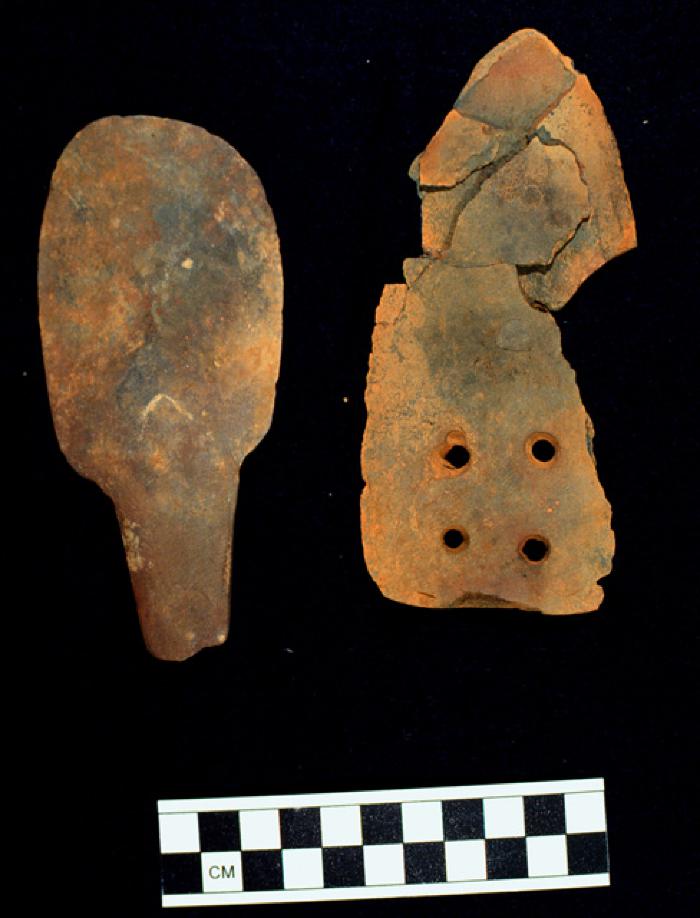Hole — Cuknaq

The tools of classical Alutiiq society were often complex, featuring many parts. A harpoon, a cooking vessel, a suit of armor, or a mask had numerous carefully shaped, interlocking pieces. To fasten these pieces together, craftsmen drilled small holes for lashing and pegging.
Alutiiq people drilled holes in every type of material, from relatively soft mediums like wood, bone, and slate to much harder materials like ivory. How did they do it? Archaeologists aren’t entirely sure. Despite the great number of stone tools recovered from prehistoric settlements, very few appear to be drills. Some holes were probably drilled with the help of a bow drill–a wooden shaft fitted with a hard tip and rotated with a small bow. Other holes were likely made with a handheld bore. The biggest puzzle is how craftsmen drilled the tiny, precise holes in the ends of ivory needles.
One way to understand drilling technology is to examine cuknat. A study of slate ulus, household knives, illustrates some of the ways that craftsmen made holes. Many ulus had a hole on their upper edge for securing a handle. On some examples, a tight, circular, conical hole indicates the use of a rotary tool, like a bow drill. Interestingly, it was common for craftsmen to drill partly through an ulu, then turned it over and drilled through the opposite side to connect the holes. Other ulus have gouged holes. Here the craftsman used a tool to dig a hole into the slate blade, forming a long, narrow opening.
